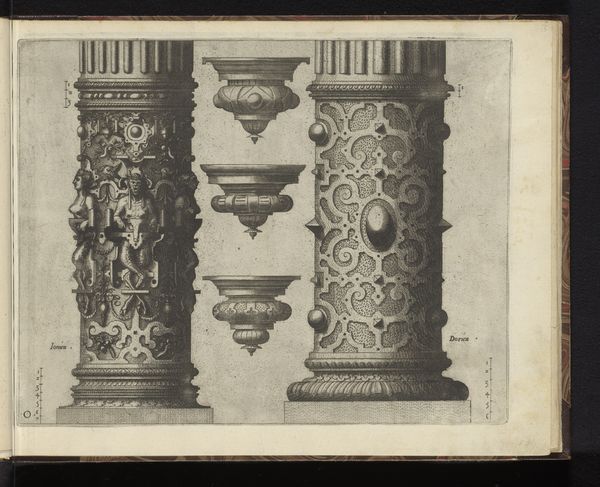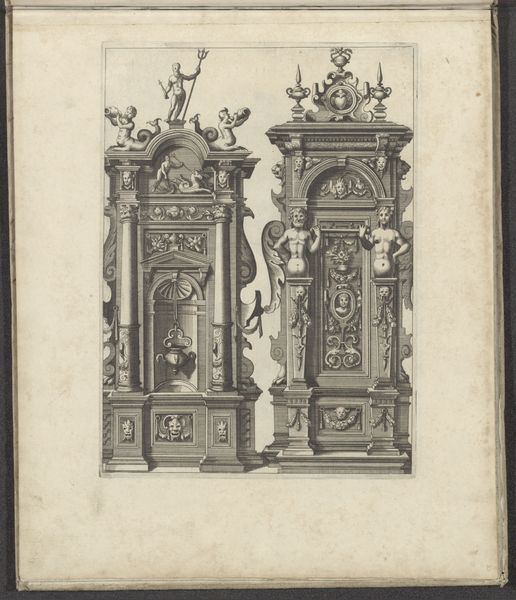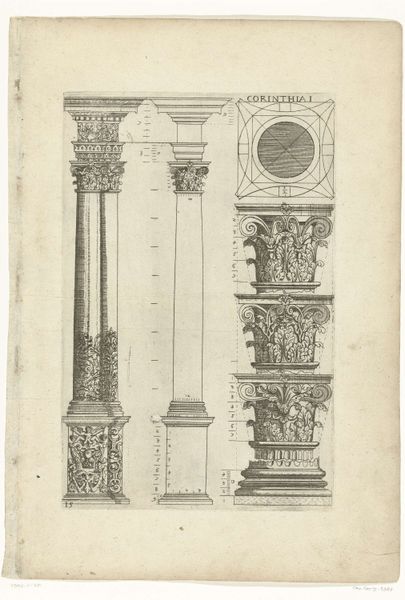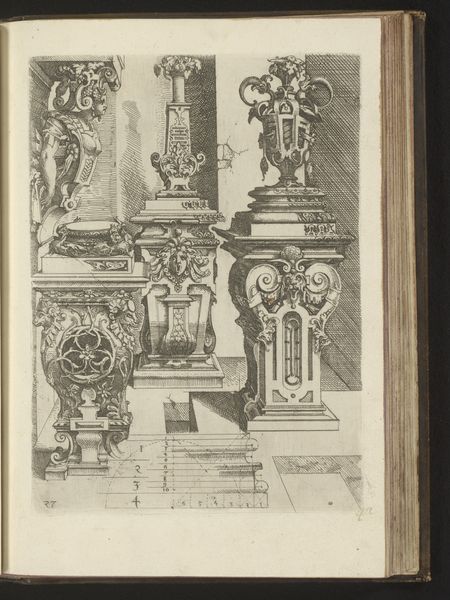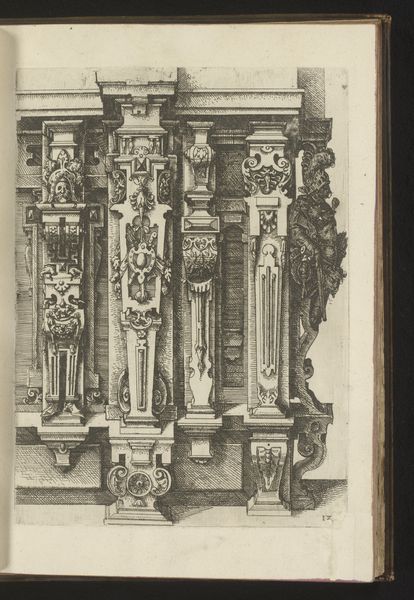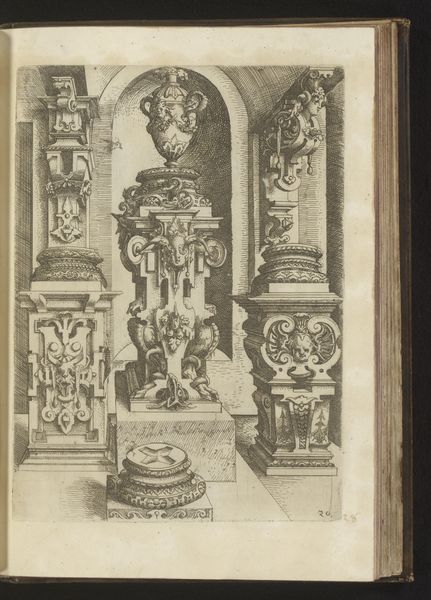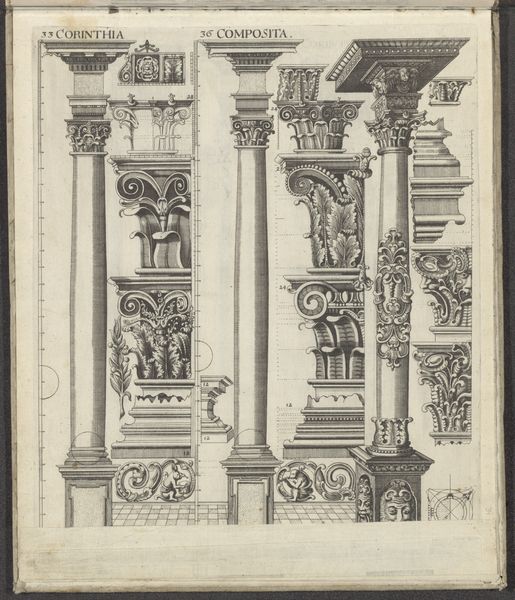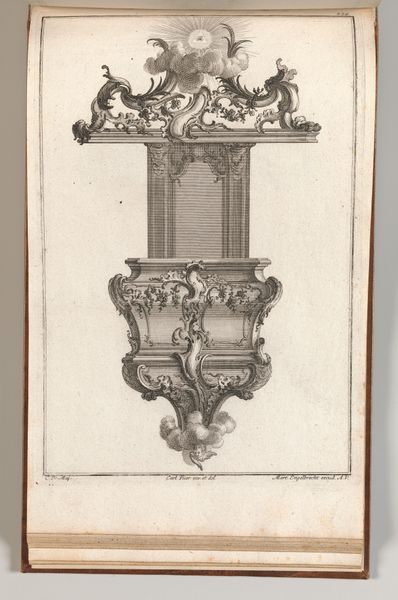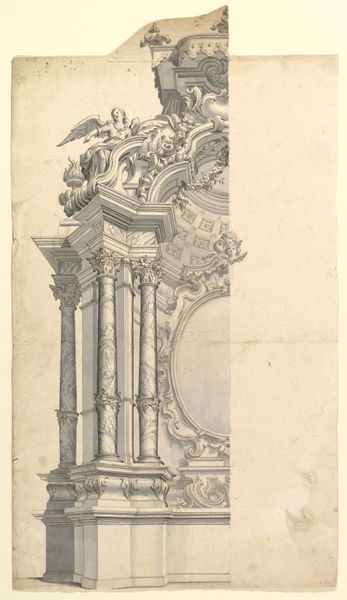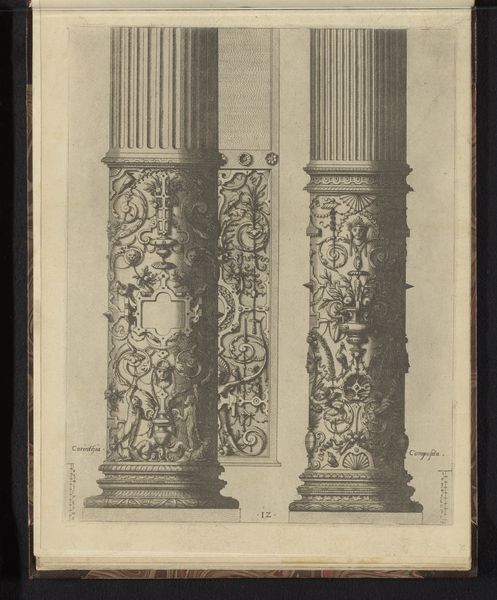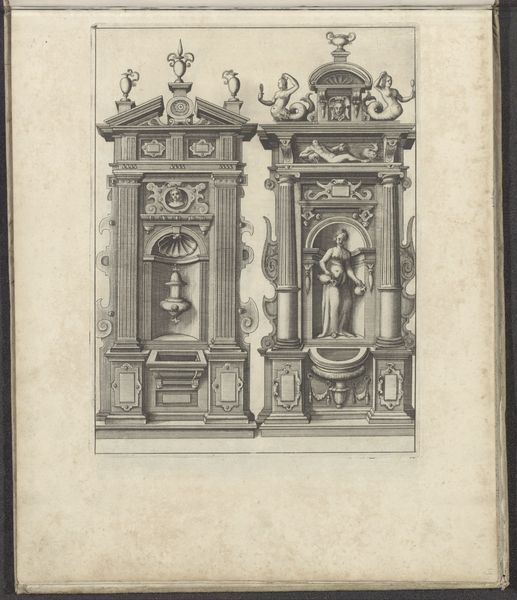
drawing, print, intaglio, engraving, architecture
#
drawing
#
medieval
# print
#
intaglio
#
classical-realism
#
form
#
geometric
#
column
#
line
#
history-painting
#
engraving
#
architecture
Dimensions: height 290 mm, width 190 mm
Copyright: Rijks Museum: Open Domain
This detailed engraving of Corinthian columns and capitals was created by Johann Christoph Feinlein in the 17th century. Look closely at the acanthus leaves, the most dominant motif. These stylized leaves aren't merely decorative; they symbolize endurance and rebirth, echoing ancient beliefs in nature's cyclical power. These motifs are not confined to Feinlein's time; they've journeyed across millennia. Consider their earlier appearance in Roman temples or even in the friezes of ancient Greece. Over time, the acanthus evolved, embodying not just natural resilience, but also the opulence and grandeur associated with classical architecture. It serves as a potent reminder of our enduring connection to the past. How interesting it is that, across cultures, the image of nature's persistence—its ability to regrow and flourish—resonates so deeply. It taps into a collective hope, a subconscious desire for renewal and continuity.
Comments
No comments
Be the first to comment and join the conversation on the ultimate creative platform.

